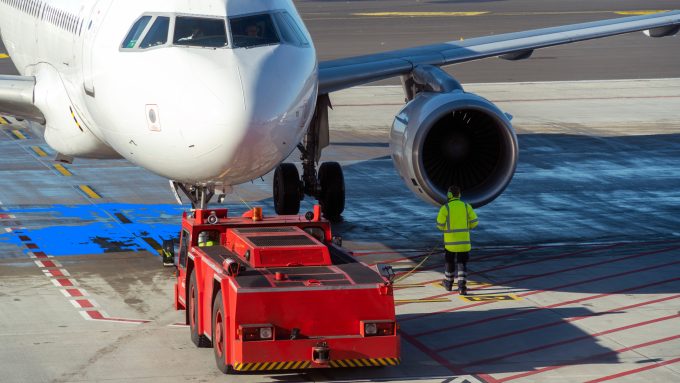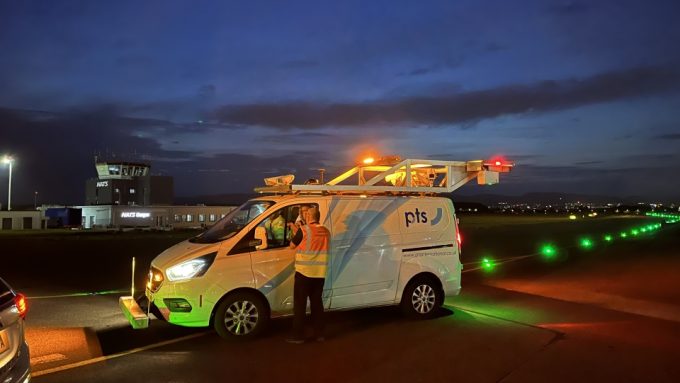
Drone solutions provider powering infrastructure inspection secures major contract and investment

“Energy infrastructure companies are facing massive and unprecedented challenges,” explains Amanda Prosser of sees.ai. “There's more demand on their networks than ever before, human expertise is a stretched resource, and there is an urgent need to manage the energy transition toward renewables.”
On top of that, she adds, infrastructure is ageing and needs maintenance. “Having eyes on, and being able to see in detail the condition of assets as close to real-time as you can, is more critical than ever.

“Existing inspection and data capture methods play an important role, but none can offer a full picture of the condition of the asset,” Amanda continues. “This is where complementary new technologies come in – we are trying to put diagnostic data of the highest value into the hands of organisations.”
sees.ai is a solution developer that takes existing hardware – in this case drones – and adds sensors and on-board computing to “transform a ‘dumb’ drone into a smart autonomous machine.” It offers clients operating critical infrastructure a service that captures ‘diagnostic-grade’ data using drones flown ‘beyond visual line of sight’ from a central control room.
“The drones capture high fidelity images that are standardised and perfectly repeatable, which means that it is easy to train a machine learning algorithm to recognise a specific failure, and you can look back over time to see the degree of degradation of an asset,” she says.
“We are capturing data autonomously that was previously impossible to obtain at scale, from specific angles and perspectives to components such as conductors and spacers.”Amanda Prosser of sees.ai
This is not about replacing helicopters used to inspect energy infrastructure, she adds. “There will always be a place for helicopters; they are brilliant at overview inspections and can fly fast over long distances. If there has been a storm and several power lines have come down, the helicopter is the tool of choice. But they're not great for close inspection.”
Helicopter pilots naturally don't enjoy flying close to live electrified structures, and livestock can be frightened by helicopters. In addition, using drones to capture asset condition data also means that engineers do not have to climb pylons as often.
“What you want is engineers climbing structures to do essential work, not climbing just to look at something,” Amanda says. “We need humans focused on doing the specialist work that only they can do.” Flying drones from a control room also reduces the need for drone operatives to be deployed to site.
This autumn, sees.ai secured a contract with National Grid to deploy its solution across England and Wales to capture asset condition data to inform its maintenance and investment programmes.
Speaking at the time, Science Minister, Lord Vallance, said: “Government backing has helped sees.ai develop from early-stage research into a thriving commercial partnership with a major UK company in the National Grid, keeping energy workers safe and demonstrating the benefit of public investment in pilot tech projects.
“We want to see more innovations like drone technology becoming viable solutions that benefit people’s lives, which is why our Regulatory Innovation Office is working with companies and regulators like the Civil Aviation Authority to cut unnecessary red tape and unlock discoveries which can grow our economy.”
News of the National Grid contract was followed last month with an announcement that the company has raised £3.65m in funding from a consortium of venture capital investors including Hearst Ventures, Sustainable Future Ventures and Elbow Beach (backed by the British Business Bank) to help it further develop its technical offer.
Five years ago, sees.ai was welcomed onto the Department for Transport’s Drone Pathfinder Catalyst, run by Connected Places Catapult. It also took part in the Government’s Future Flight Challenge to develop air mobility systems.
“Connected Places Catapult helped us to deepen our relationship with central Government and the Civil Aviation Authority, which has been game changing for us. We were able to explore regulation and knowledge exchange, and have conversations about optimal pathways from innovation to rollout.”
“The role the Catapult plays is really important, because they are a connector and facilitator – and the right conversation with the right person at the right time can change everything for a business at our stage of growth,” Amanda says.
The company also conducted a demonstration of the capabilities of drones around a wind turbine at Levenmouth in Scotland, with the help of Offshore Renewable Energy Catapult.
“In the medium term, we are focused on the electricity grid, but there could be applications for this technology in other markets such as rail, oil and gas and even nuclear,” adds Amanda. “This is all about sending machines into places where it is difficult, inefficient or sub-optimal for humans to go.”
Read about Connected Places Catapult’s work to promote drones for business good.





